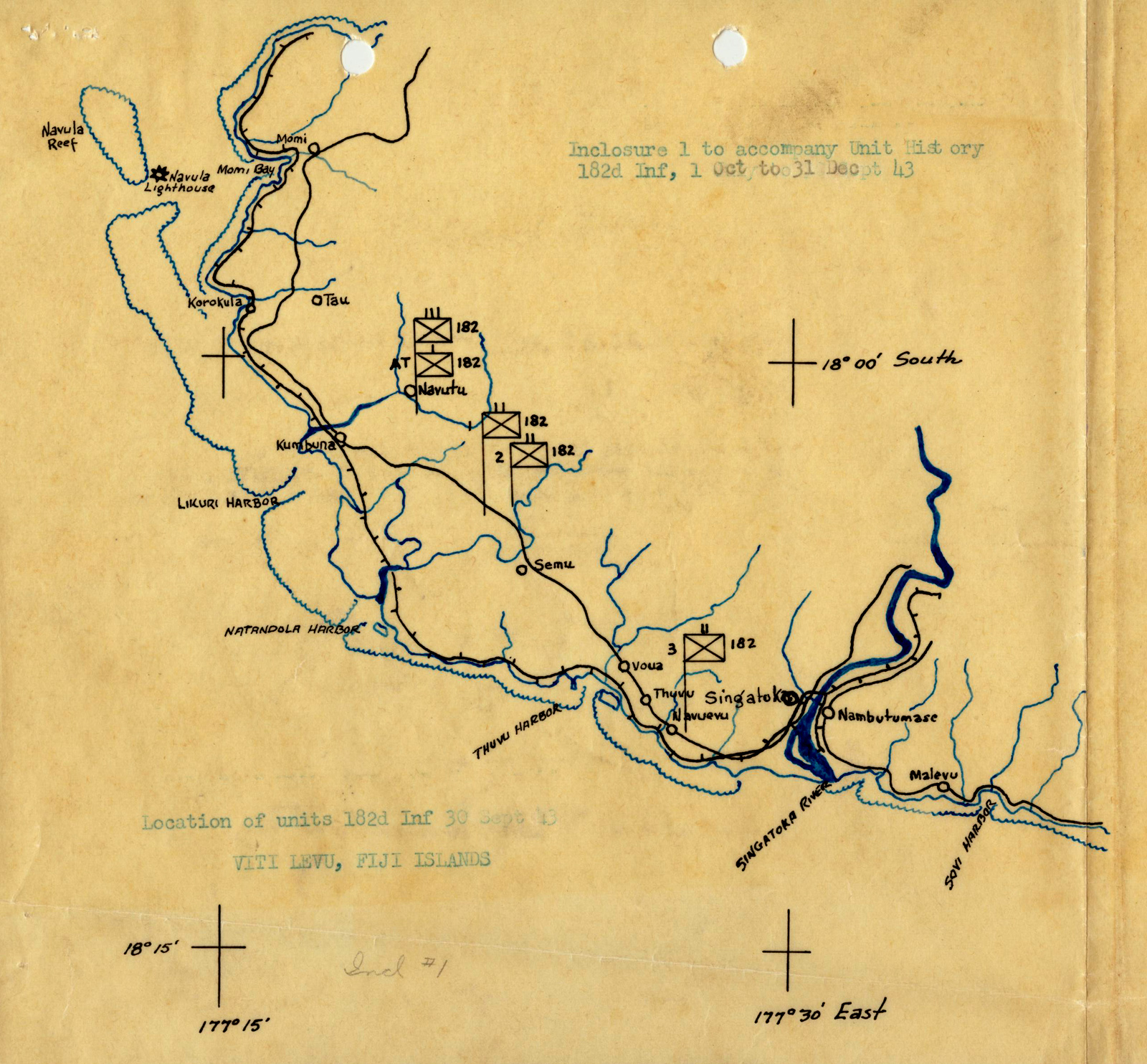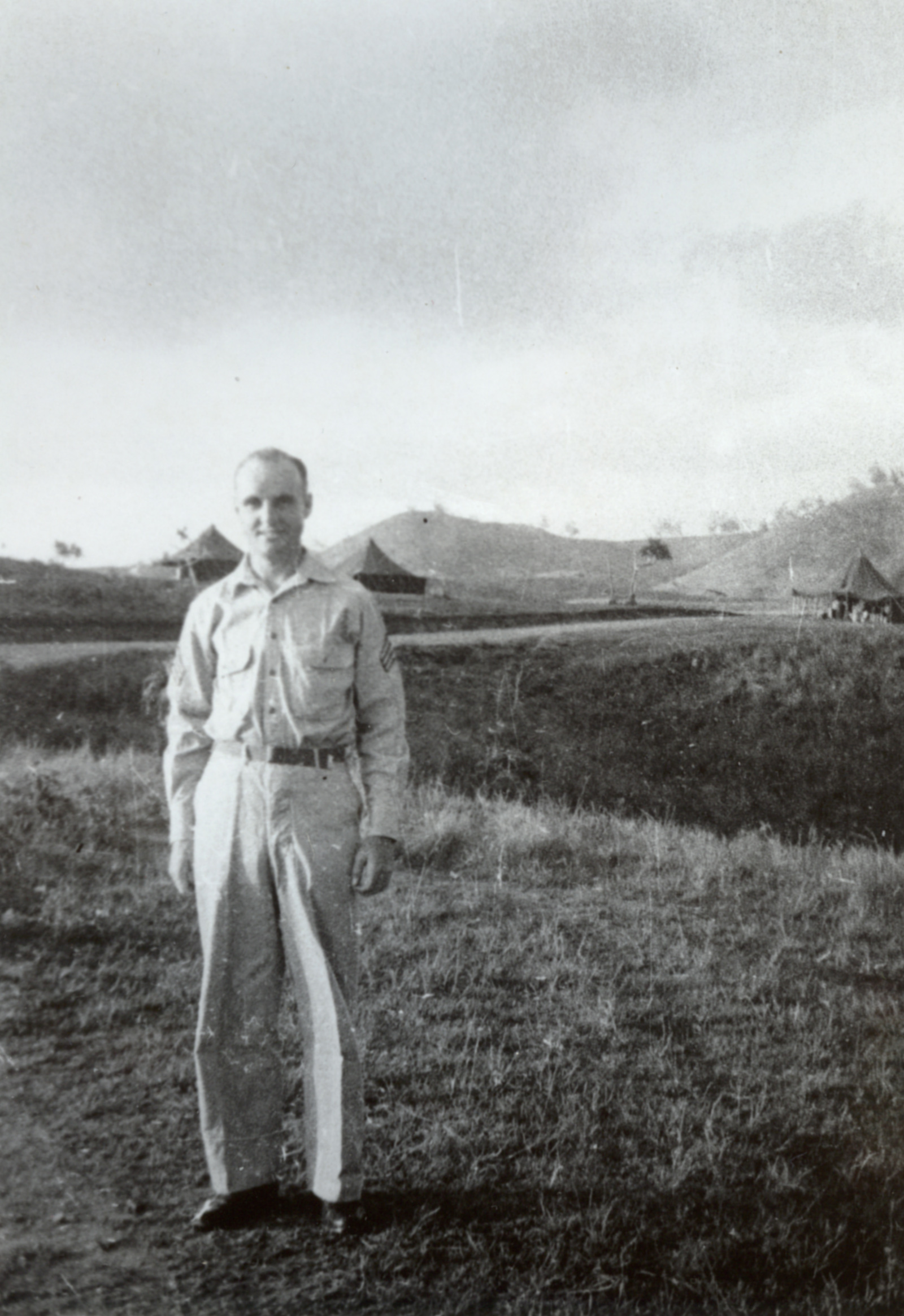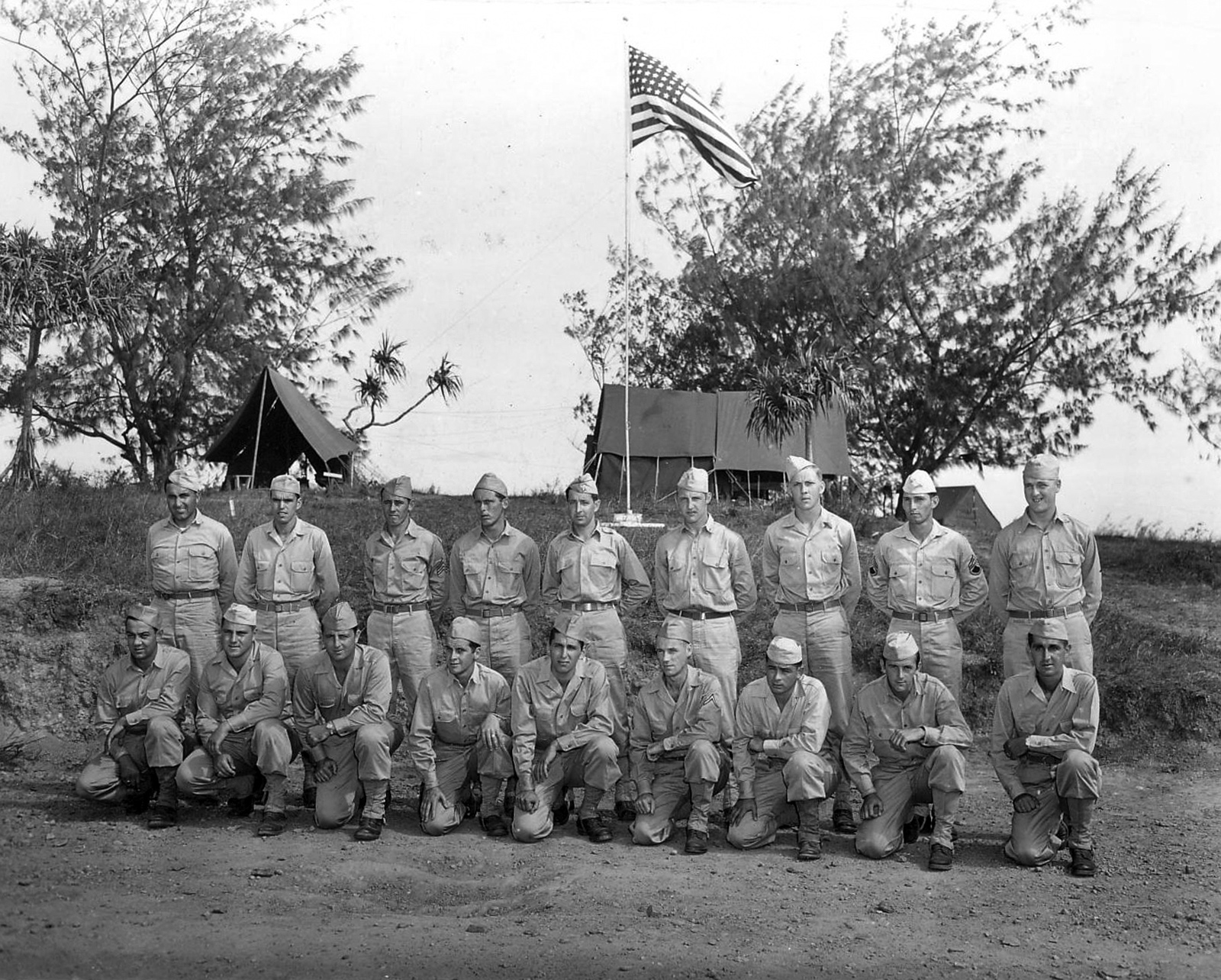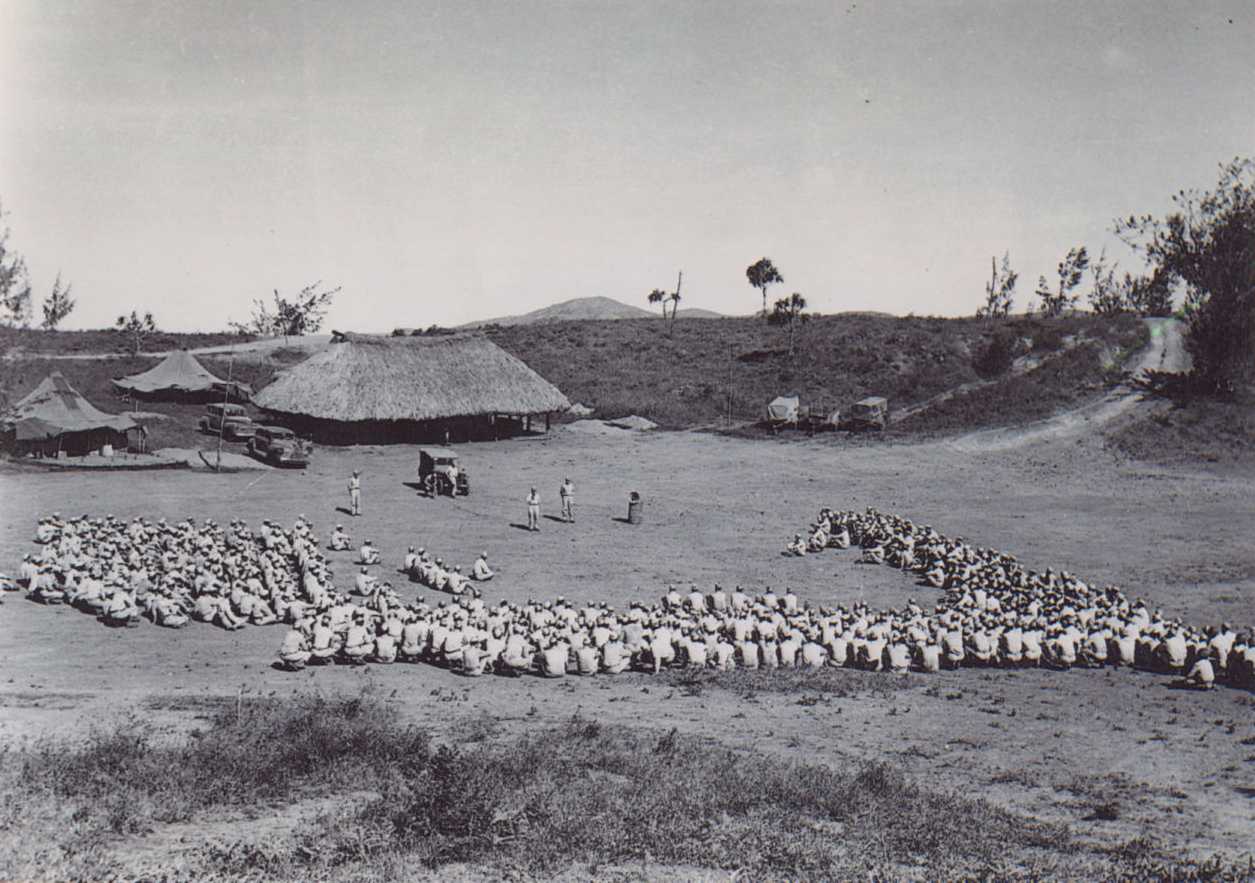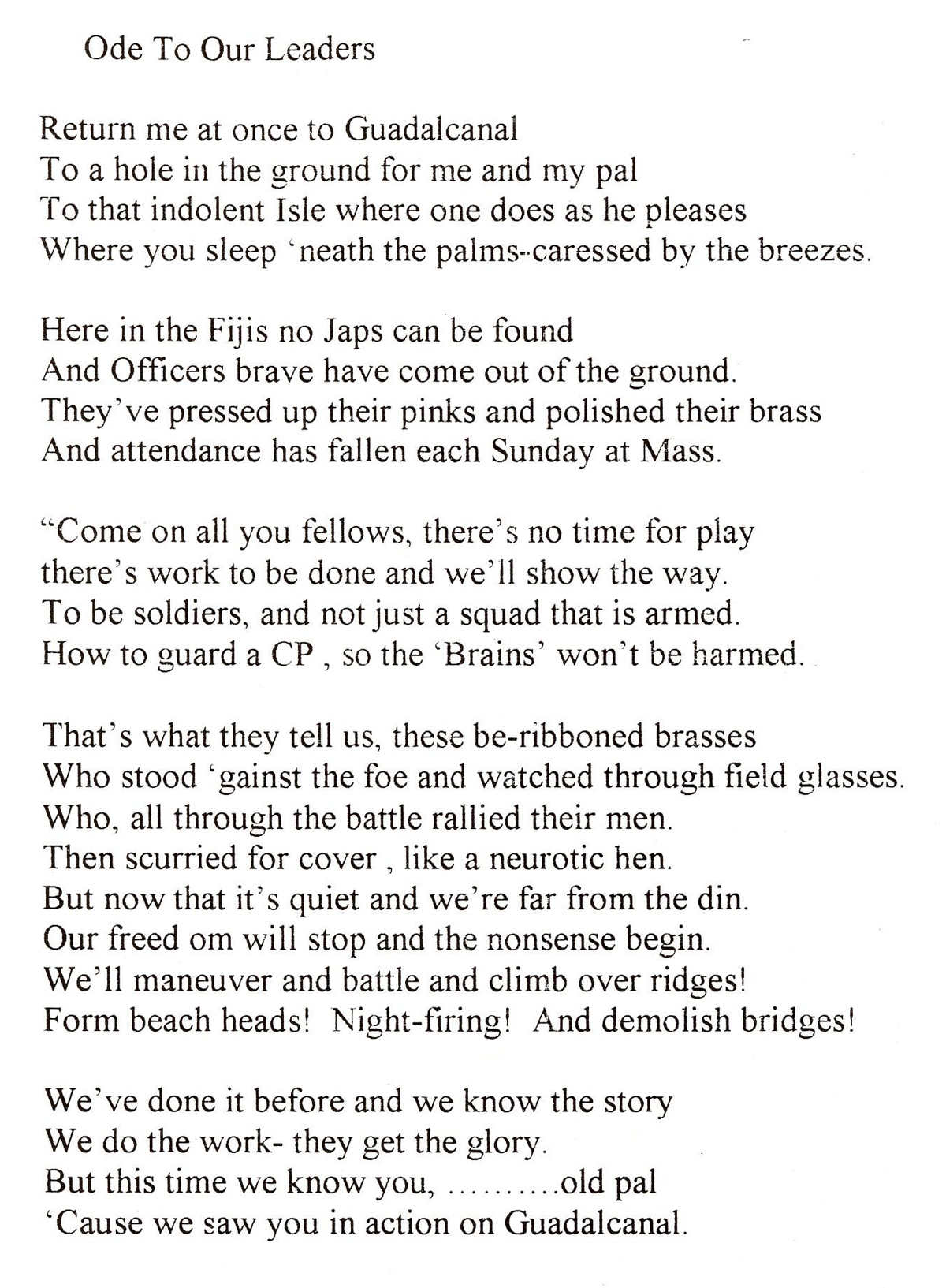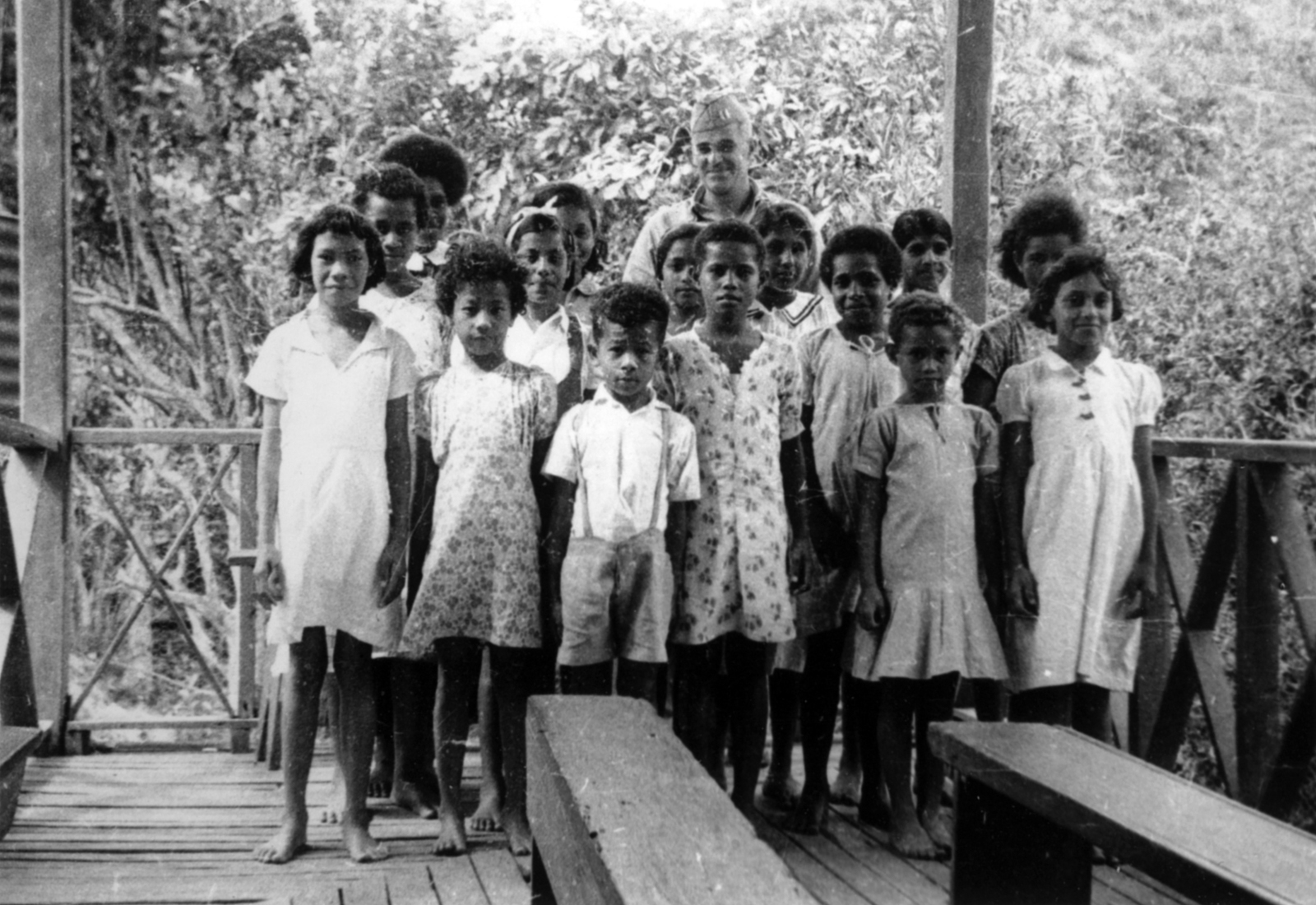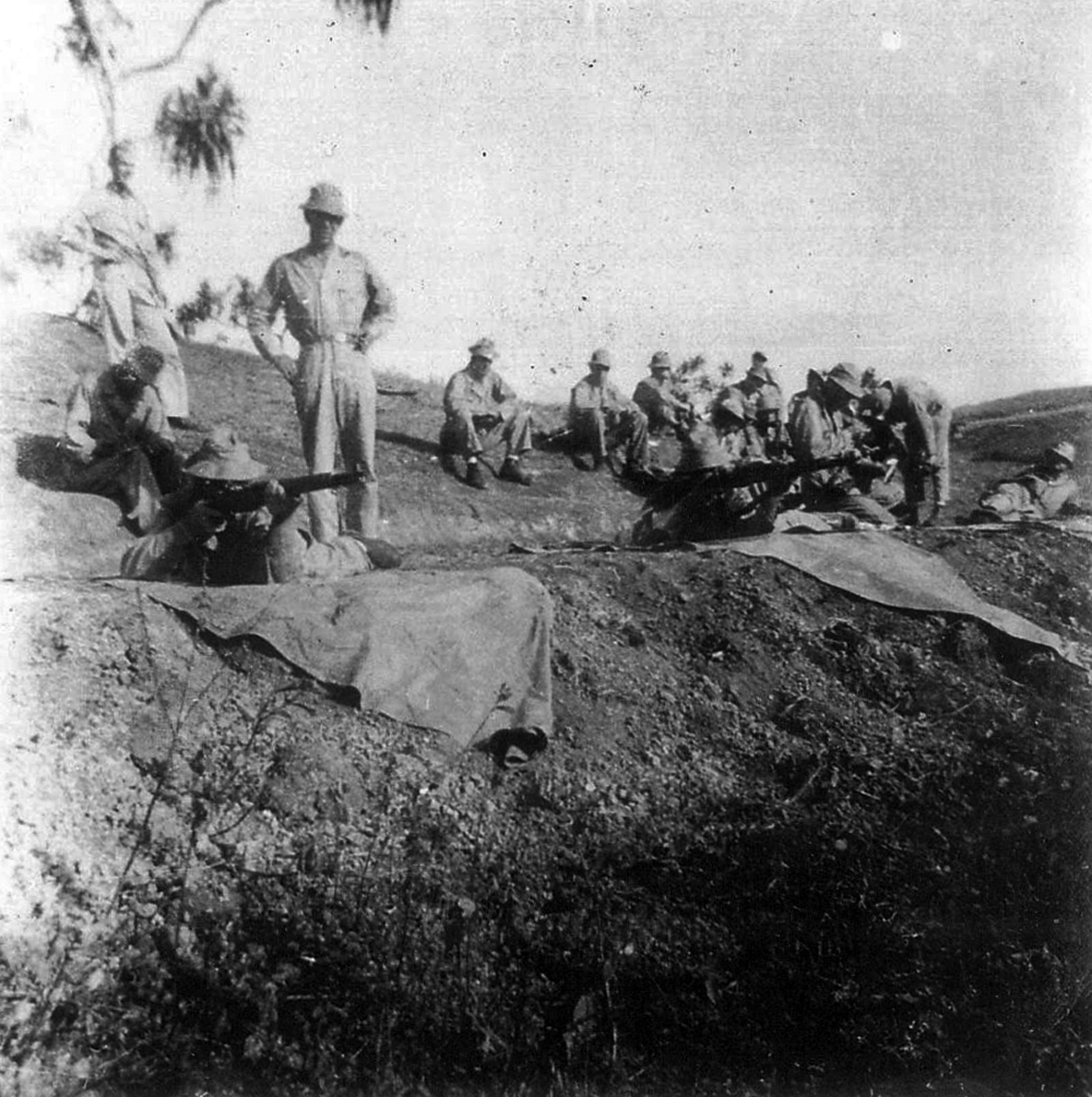By March 1943, with Guadalcanal safely in Allied hands, the soldiers of the Americal Division began to depart that primitive, blood soaked island. Their next destination was a welcome change: Fiji (see Google Map here). This island paradise, with a more relaxing climate, easier terrain, and scantily clad native women, would be the home for Company G for the rest of 1943. Their mission was to defend the island, while recuperating from their stay on Guadalcanal, and training for future combat operations. Events in the Pacific during World War II slowed a bit in 1943, as the United States industrial base geared up production, and the military made grand plans for a sustained campaign of island hopping towards Japan.
The 182nd was dispersed at various positions on the southwest coast of Viti Levu, the largest island in the vast Fiji archipelago (see the map in Photo #1). Company G was stationed just northwest of the village of Semu. Here, out in the countryside, far from the capital of Suva, the men found little in the way of entertainment. Living conditions on Fiji were far superior to the crude jungle lifestyle on Guadalcanal. Ed Monahan, now a Sergeant, poses in Photo #2. The gentle, grassy hills of Fiji dot the landscape behind him, as do a number of Army tents.
The 182nd Infantry Regiment held a ceremony in June 1943 to recognize soldiers for their actions during the Guadalcanal campaign. In Photo #3, men of the 2nd battalion, including 6 men from Company G, pose with their newly pinned Purple Hearts. Of particular note is 1st Lieutenant Donald Pray (back row, center), a future Company G commanding officer. The following month, on 12 July 1943, Major General John Hodge, commanding officer of the Americal Division, addressed the men of the 2nd Battalion of the 182nd Infantry Regiment. He can be seen in Photo #4, to the left of the loudspeaker mounted on an oil drum. Note that the campsite consists of both Army tents, and grass huts. Some soldiers resented the return to Army formality on Fiji, after the more lax – though dangerous – lifestyle they had enjoyed on Guadalcanal. A poem by John Mulcahy of Company G (seen in Photo #5) expresses these sentiments, without reservation.
Many of the soldiers of Company G were deeply religious, primarily of Christan denominations. When in civilized areas, these men sought out others to share their beliefs with. In Photo #6, Father Brock poses with local children of Fiji. The exact date and location are unknown, though it may be at St. Joan of Arc school in Sigatoka. The photo is from a collection by Ed Monahan, who traded letters with a nun from St. Joan of Arc. John Mulcahy did as well.
Allied advances in the Pacific slowed for much of 1943, after the victory at Guadalcanal. The American military was still ramping up both production of materials, and training of new soldiers. By the end of 1943, the aggressive island hopping campaign that led to eventual victory was underway. On Fiji, Company G prepared itself for a role in the island hopping strategy. Many new replacements joined the unit to fill the ranks of those lost to combat on Guadalcanal. They also filled the ranks of those lost to jungle diseases, particularly malaria, which was still a serious problem for the men on Fiji. Training exercises integrated these new men into the combat team. In Photo #7, soldiers of the 182nd Infantry drill at a rifle range on Fiji.
In November 1943, Allied forces invaded the island of Bougainville, northwest of Guadalcanal, in the Solomon Islands. The Allies battled Japanese defenders on the island, carved a perimeter in the jungle, and established airfields. Reinforcements were needed to hold the line against the heavy Japanese presence on the island. In early December, plans to move the Americal Division to Bougainville were dispatched. In this declassified report, the destination of the units is referred to by its codename: CHERRYBLOSSOM. Just days before Christmas 1943, the men of Company G once again found themselves on board a transport ship headed for a combat zone. They spent Christmas at sea, and on 28 December, arrived at the place that would be their home for the next year.
Next Chapter: Bougainville: The Battle for Hill 260

